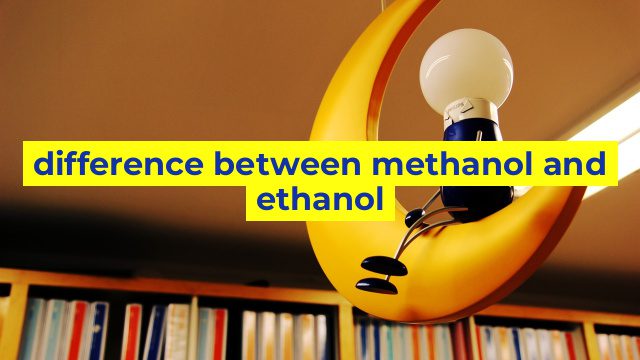The Key Differences Between Methanol and Ethanol
When it comes to biofuels, two common options are methanol and ethanol. Both of these alcohols are used as alternative transportation fuels and have similar chemical properties. However, they have some key differences that set them apart in terms of safety, efficiency, and environmental impact.
Chemical Structure
Methanol, also known as wood alcohol, has a simple chemical structure consisting of a methyl group (-CH3) bonded to a hydroxyl group (-OH). Ethanol, also known as drinking alcohol, has a slightly more complex structure with two carbon atoms (C2H5OH) bonded to a hydroxyl group. This difference in chemical structure affects their physical and chemical properties.
Source of Production
Methanol is produced primarily from natural gas, coal, or biomass feedstocks such as wood, while ethanol is produced from fermentation of starches, sugars or cellulose. This makes ethanol a renewable resource while methanol is derived from non-renewable sources which makes it less environmentally and sustainable.
Use and Applications
Methanol is mainly used for industrial purposes such as in the production of adhesives, plastics, solvents and formaldehyde. It is also used as a fuel in racing cars, boats, and aircraft due to its high energy density. On the other hand, ethanol is used as a fuel for combustion engines, and it is added to gasoline to increase its octane rating as well as reduce greenhouse gas emissions.
Safety and Environmental Risk
Methanol is highly toxic when ingested, inhaled or absorbed through the skin. Its production and usage present serious environmental risks such as negative impact on soil and water quality, as well as air pollution. On the contrary, ethanol is a relatively safe alternative fuel that produces lower emissions of carbon monoxide, hydrocarbons, and nitrogen oxides. It is also easily biodegradable and contributes to reduced greenhouse gas emissions due to its renewable nature.
In conclusion, the differences between methanol and ethanol are significant in spite of their similar properties. Ethanol is the more popular and widely used fuel of the two, and due to its sustainable production methods and low environmental impact, it’s becoming increasingly preferred as an alternative to petroleum-based fuels. However, regardless of the fuel type, it’s important to use these fuels safely for the benefit of ourselves and the environment.
Table difference between methanol and ethanol
| Property | Methanol | Ethanol |
|---|---|---|
| Chemical Formula | CH3OH | C2H5OH |
| Molecular Weight (g/mol) | 32.04 | 46.07 |
| Density (g/cm3) | 0.7918 | 0.7893 |
| Boiling Point (℃) | 64.7 | 78.5 |
| Flash Point (℃) | 11.0 | 13.0 |
| Melting Point (℃) | -97.6 | -114.3 |
| Uses | Fuel, solvent, antifreeze | Fuel, solvent, alcoholic beverages |

